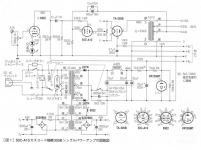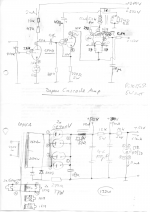Found this in the "Goldmine" thread on this forum. If I interpret this correctly, it features a cascode output. Don't know many such amps. I can think of several disadvantages when using a cascoded power stage, like high output impedance or wasted power. But what could possibly be an advantage, other than rareness, novelty or can-do-it, so why not ... ?
Attachments
I would try it, but sincerely I hate led biasing in the first stage. Also, the cathode resistor may return to the transformer's secondary, and discount some few AmperTurns from the primary.
Last edited:
Advantages?
1. Because the 50C has a lower bias voltage, the feedback capacitors are rated at a lower voltage rating than if you used only a 300B (by itself). 300B bias is much larger than 18V 50C.
2. Maybe the cascode has more gain, so there is a higher open loop to closed loop ratio.
3. Maybe the 50C has more transconductance than a 300B, so it is a better negative feedback match for the 4 Ohm tap.
I will not be trying this circuit.
1. Because the 50C has a lower bias voltage, the feedback capacitors are rated at a lower voltage rating than if you used only a 300B (by itself). 300B bias is much larger than 18V 50C.
2. Maybe the cascode has more gain, so there is a higher open loop to closed loop ratio.
3. Maybe the 50C has more transconductance than a 300B, so it is a better negative feedback match for the 4 Ohm tap.
I will not be trying this circuit.
Last edited:
A valid way to turn pretty expensive triode into a cheap power pentode. I do an opposite thing, use pentode stages with nested feedbacks to get the same results like Western Electric achieved crafting geometry of triodes. The result is more predictable, since selecting precision resistors is much cheaper and simple than crafting one tube with high precision tooling.
Should get a resulting triode with approx. Mu' = 3.9 x 8 = 31.2 with gm of the 50C-A10 of 14000 and approx. Rp'= Mu'/gm = 2229 Ohms
Distortion being the product of both tubes in series, would be a bit more than the individual sums of 5% + 7%.
Yeah, as Wavebourn said, $1000 tubes changed into a $5 pentode. And lots of extra heat.
Distortion being the product of both tubes in series, would be a bit more than the individual sums of 5% + 7%.
Yeah, as Wavebourn said, $1000 tubes changed into a $5 pentode. And lots of extra heat.
As power triodes are expensive replacing them with triode connected cheap pentodes ... ah no, that's perverted ...
As power triodes are expensive replacing them with triode connected cheap pentodes ... ah no, that's perverted ...
Sure. But pentode amps with nested feedbacks outperform amps with expensive triodes.
Sure. But pentode amps with nested feedbacks outperform amps with expensive triodes.
You know the classic answer to that of cause.... you don't listen properly 😱 (pun intended)
I like both but for different reasons. Power hungry speakers demand push pull operation for current, playing popular music at high levels. Not every design is succesful in pleasing the listener despite low distortion levels.
SE amps can be build small, delivering adequate power to a sensitive speaker. One must forgive the relative colored character due to dominant H2 but it may please the ear when exectuted tastefully, it holds a quality of its own. Big SE amps (over 10W per channel) can result in the most impressive reproduction systems available. Finance can go wild as loudspeakers in the exclusive high end boutiques carry a big ticket.
Attachments
-
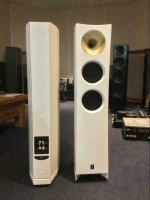 ZingaliZeeo SEI.JPG37 KB · Views: 62
ZingaliZeeo SEI.JPG37 KB · Views: 62 -
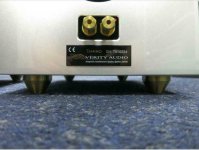 VerityAudioTamino.JPG44.2 KB · Views: 70
VerityAudioTamino.JPG44.2 KB · Views: 70 -
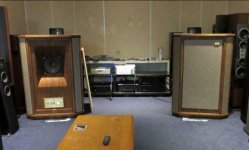 TannoyWestminister RoyalSE.JPG33.7 KB · Views: 68
TannoyWestminister RoyalSE.JPG33.7 KB · Views: 68 -
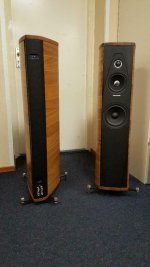 SonusFaberOlympica2.JPG60.2 KB · Views: 61
SonusFaberOlympica2.JPG60.2 KB · Views: 61 -
 RevelUltimaStudio.JPG44.8 KB · Views: 58
RevelUltimaStudio.JPG44.8 KB · Views: 58 -
 GamutL7.JPG29.4 KB · Views: 245
GamutL7.JPG29.4 KB · Views: 245 -
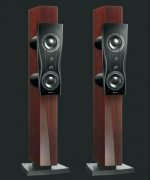 DynaudioConfidence C2Platinum.JPG23.6 KB · Views: 231
DynaudioConfidence C2Platinum.JPG23.6 KB · Views: 231 -
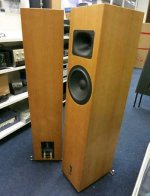 BlumehoferAcousticsTempesta 20.JPG27.8 KB · Views: 242
BlumehoferAcousticsTempesta 20.JPG27.8 KB · Views: 242 -
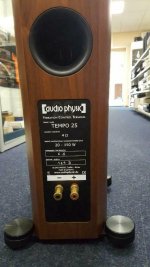 audiophysics.JPG66.9 KB · Views: 263
audiophysics.JPG66.9 KB · Views: 263
You know the classic answer to that of cause.... you don't listen properly 😱 (pun intended)
What? 😀
45W/Channel SE amplifier for low efficiency speakers. Can be switched into negative output impedance mode for servo-damping of speakers.
Always considered Bach to have negative output but now for amplifier impedance... Are you sticking semi's to the output terminals of your OPT?
Always considered Bach to have negative output but now for amplifier impedance... Are you sticking semi's to the output terminals of your OPT?
Not at all. Just a sneaky bridge between positive and negative feedbacks by current in addition to negative feedbacks by voltage. As I mentioned above, in my amps I do not rely on properties of triodes due to their internal feedbacks. I use external feedbacks around pentode stages to get properties that I need. A power amp is not just an amplifier. It is a driver for mechanical oscillating system called "Loudspeaker". In order to drive loudspeakers properly we need certain parameters of amplifiers. So instead of depending on mercy of triodes I craft them deliberately. Playing with feedback loops I can get needed transfer curve and needed output impedance.
If such math used to be applied to later solid state amps it does not mean that it can't be applied to vacuum tubes. Just when designers discovered opamps they started learning the math and new topologies. They did not learn tubes, and considered them obsolete. But who said that the same math can't be applied to tube amps, to get end results that we need?
That means, SE amp not necessary have "High H2 harmonic". It can have distortion profile that I want. I am getting both, diminishing, disappearing distortions when sounds decay, and soft asymmetric saturation on high loudness. It fools imagination that used to filter out and ignore distortions of perception that are similar in nature.
That means, SE amp not necessary has "sloppy bass", it can drive heaviest woofers damping them actively by negative resistance.
Also, that means I do not need awfully expensive output transformers for wide frequency response, when I use optimal feedback loops.
Should get a resulting triode with approx. Mu' = 3.9 x 8 = 31.2 with gm of the 50C-A10 of 14000 and approx. Rp'= Mu'/gm = 2229 Ohms
Distortion being the product of both tubes in series, would be a bit more than the individual sums of 5% + 7%.
Yeah, as Wavebourn said, $1000 tubes changed into a $5 pentode. And lots of extra heat.
I prototyped it nontheless, but with much much cheaper tubes:
6FM7 dissimilar triode instead of 50C-A10
1619 DHT triode connected
6z4p hybrid rectifiers
And yes, it is kind of an effects box, THD 2.5% at 1W, 4.5% at 5W.
Attachments
- Home
- Amplifiers
- Tubes / Valves
- Cascode as SE power output
